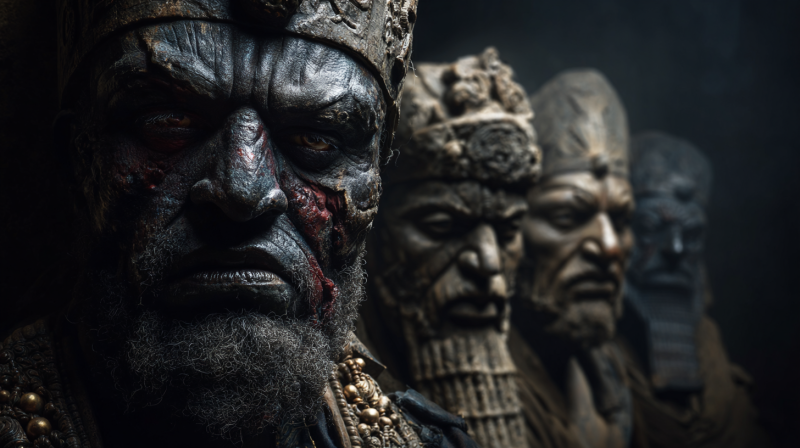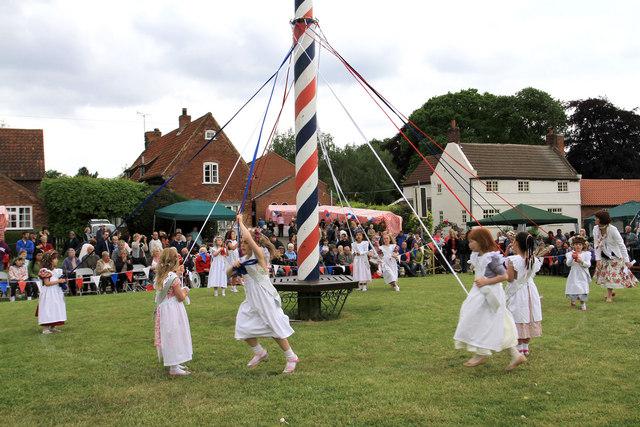The celebration of the spring equinox on March 21 is known by many names, including Ostara. It has been honored and commemorated for a very long time in numerous locations all throughout the world.
Cybele’s devotees in ancient Rome held the belief that their goddess had a consort who was conceived as a virgin. Each year, at the time of the vernal equinox on the Julian Calendar, a man by the name of Attis died and was raised from the dead (between March 22 and March 25).
The festival of No Ruz, which is Persian for “new day,” was held in honor of the spring equinox during the reign of the Achaemenid dynasty of Persian kings. It has its roots in Zoroastrianism and is still celebrated as a time of hope and renewal in many Persian nations today. Before the start of No Ruz, Iranians celebrate a holiday called Chahar-Shanbeh Suri, during which they cleanse their homes and jump over fires to usher in the 13-day festivity.
For ten centuries, the native Mayans of Central America have observed a spring equinox feast. On the equinox day, the sun sets on El Castillo, a large ceremonial pyramid in Mexico “The western face is illuminated by the late-afternoon sun. A diamond-backed serpent appears to be descending from the top of the northern staircase of the pyramid due to the growing shadows.” The phrase “The Return of the Sun Serpent” has been used to describe this since ancient times.
According to the Venerable Bede, Eostre served as Saxon culture’s representation of Ostara, a Germanic goddess. Her feast day fell on the full moon after the vernal equinox—pretty much the same date as Easter for Christians in the west. There isn’t much written evidence to support this, but a widely accepted myth holds that Eostre discovered a wounded bird on the ground in the dead of winter. She changed it into a hare in order to save its life. But “the change wasn’t entirely complete. The bird had a hare-like appearance, but it still had the capacity to lay eggs, which the hare would then decorate and leave for Eostre as gifts.“
This was a day to celebrate planting and the start of a new harvest season for early Pagans in the Germanic nations. Ostara was not typically observed as a holiday by the Celtic peoples, despite the fact that they were aware of the seasons changing.
The legend of the Roman deity Mithras is comparable to the account of Jesus and his ascension. Mithras assisted his followers in crossing over to the world of light after death. He was born at the winter solstice and raised from the dead in the spring. According to a legend, the Sun ordered Mithras, a god revered by Roman soldiers, to offer the sacrifice of a white bull. He complied grudgingly, but a miracle happened just as his knife touched the creature’s body. The moon appeared to be the bull, and the night sky appeared to be Mithras’ garment. Flowers blossomed where the bull’s blood fell, and grain stalks sprang from its tail.
Celebrations Around the World
In ancient Egypt, the Festival of Isis was held to commemorate the coming of spring and new life. In the tale of Osiris’s resurrection, Isis played a significant role. According to folklorist Sir James Frazer in The Golden Bough, “We are told that the Egyptians held a festival of Isis at the time when the Nile began to rise… The goddess was then mourning for the lost Osiris, and the tears which dropped from her eyes swelled the impetuous tide of the river.” Although Isis’ major festival took place in the fall.
No Ruz, an Iranian/Persian holiday, starts just before the spring equinox. In reality, the word “No Ruz” means “new day,” and this is a season of optimism and rebirth. A lot of cleaning is typically done, as well as repairs to old damaged items, painting of dwellings, and gathering and arranging of fresh flowers for indoor display. The Iranian new year begins on the day of the equinox, and traditionally people celebrate by getting outside for a picnic or other activity with their loved ones. Zoroastrianism, which predated Islam as the main religion in ancient Iran, has a strong influence on No Ruz.
Every year on March 17th, St. Patrick’s Day is observed in Ireland. Ireland is famed for St. Patrick as a symbol, especially in March. He was even credited with a miracle for driving the snakes out of Ireland, which is one of the reasons he is so well-known. Many people are unaware that the serpent was originally a metaphor for Ireland’s ancient Pagan religions. St. Patrick successfully introduced Christianity to the Emerald Isle, virtually eradicating Paganism in the process.
Every spring, the Feast of Cybele was a significant event for the ancient Romans. In honor of Cybele, a mother goddess who served as the focal point of a Phrygian fertility cult, eunuch priests carried out occult rituals. Attis, who was also her grandson, was her lover, and out of jealously, he castrated and killed himself. The first violets were made from his blood, and thanks to a divine intervention, Cybele was able to resuscitate Attis with some assistance from Zeus. The Hilaria, which is still celebrated annually in some places from March 15 to March 28, honors Attis’ rebirth and Cybele’s might.
The Passover holiday, which falls in the middle of the Hebrew month of Nisan, is one of Judaism’s most important holidays. It was a celebration of pilgrimage to remember the Jewish exodus from Egypt after generations of servitude. The Seder, a special supper, is held, and it is followed by readings from a special book of prayers and the telling of the tale of the Jews fleeing Egypt. The eight-day Passover customs include a comprehensive spring cleaning that involves combing around the entire house.
Maslenitsa is celebrated in Russia as a period when warmth and light have returned. Around seven weeks before Easter, this folk event is observed. Meat, fish, and dairy products are off-limits during Lent. Maslentisa is traditionally a large feast celebrated before the solemn, reflective time of Lent because it is the last opportunity for anybody to eat such foods for a while. In a bonfire, a straw statue of the Lady of Maslenitsa is burned. After the fire has been extinguished, the leftover pancakes and blintzes are added, and the ashes are then dispersed across the fields to fertilize the following year’s crops.
Scotland’s Lanark region hosts Whuppity Scoorie on March 1 to celebrate the arrival of spring. Around dawn, kids congregate in front of a nearby church, and when the sun rises, they sprint around the building while swinging paper balls around their heads. The kids collect the coins that the local assemblymen threw for them at the conclusion of the third and final lap. The Capital Scot reports that there is a legend that this incident started long ago when troublemakers were “scooped” in the Clyde River as a kind of retribution for misbehavior. It doesn’t seem to be seen anyplace else in Scotland and seems to be specific to Lanark.





